When it is up to the power, we first need to know that the card with the factory settings at 290 watts has been set a limit. This Power Target is almost exploited in gaming and almost completely used in stress testing. The increase in the afterburner to the maximum of approx. 330 watts, on the other hand, is almost pointless, because the card of it alone is no longer faster, either because the voltage limits or the temperatures limit the boost steps, or everything together.
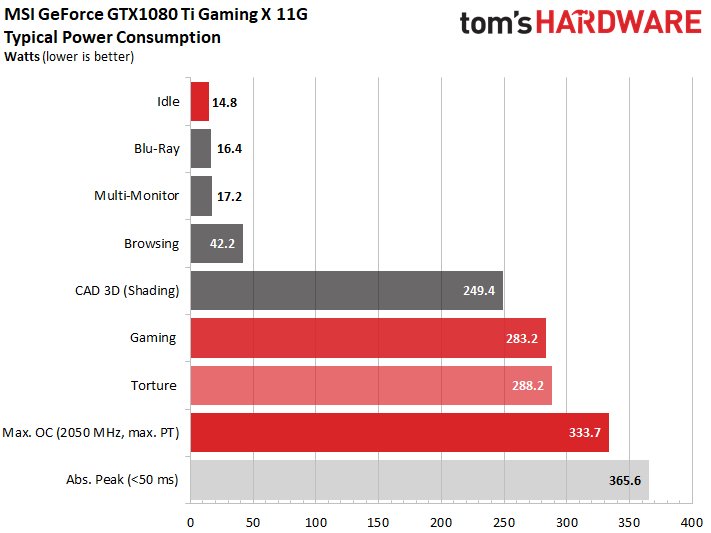
With the tensions, we see the reason in direct interaction with the warming of the map. If the full 1.0625V is still in the beginning, the value drops quickly to a maximum of 1.05 volts during the course of the heating, but can also be significantly lower if the load on the GPU increases sharply in places. This effect can also be seen in the Torture Loop, which is much deeper.
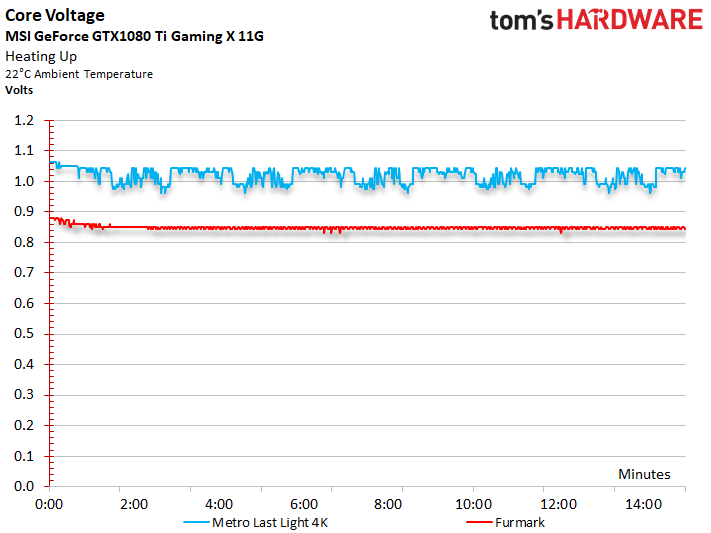
More about the gaming loop
Let us now consider the curve for the power consumption separately according to the individual supply rails (rail) in a higher resolution over the period of two minutes. Despite our intelligent low-pass filter, some spikes remain visible, reaching up to 360 watts in places.
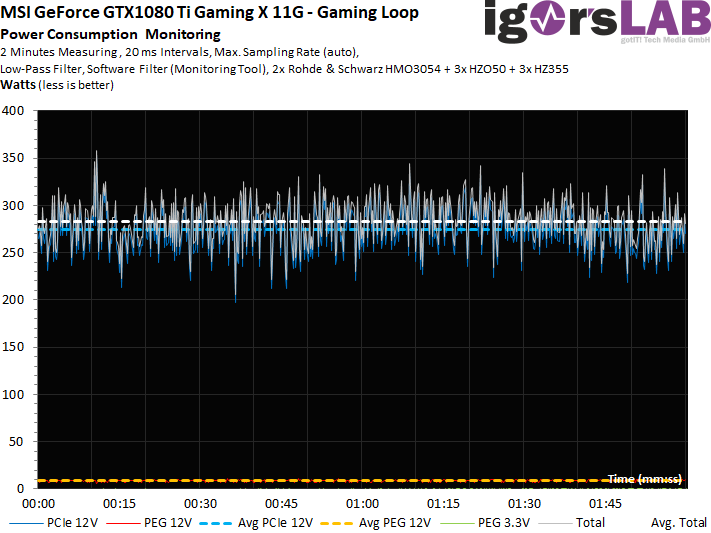
For this purpose, the curves of the currents look identically hectic:
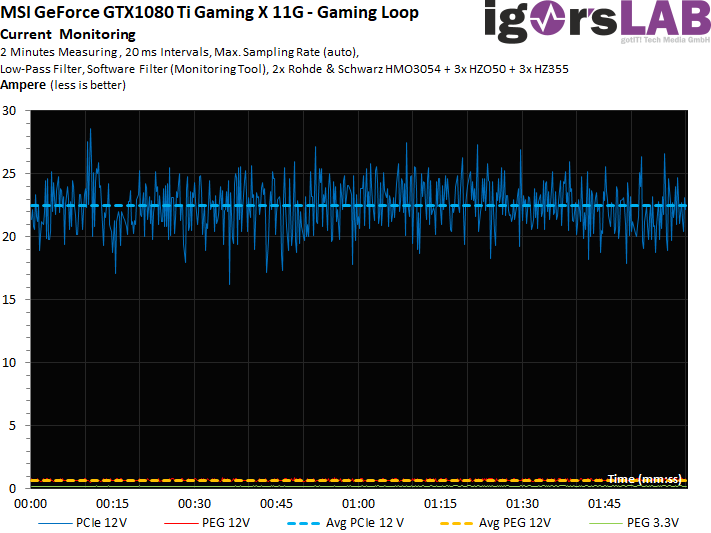
Torture test in detail
Since the load is more constant, the power consumption increases again somewhat as an average value, but the peaks are almost completely eliminated. We see very nicely where Boost is already starting to reduce the power consumption.
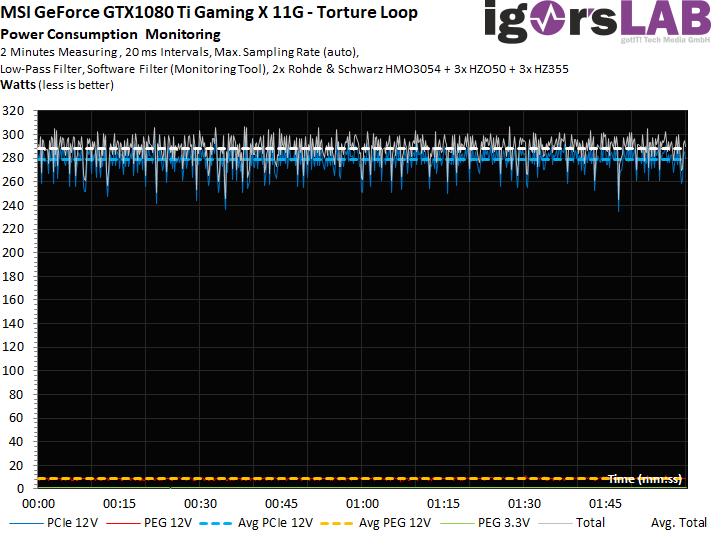
Again, analogously, only the view of the flowing currents:
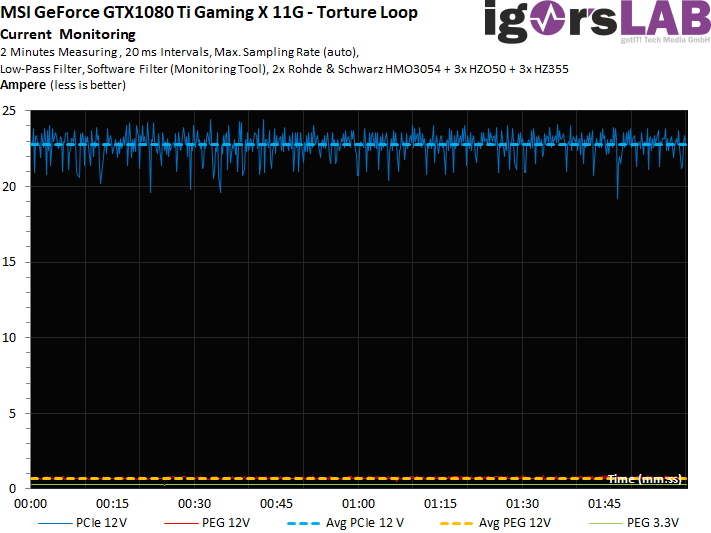
Limits: Maximum OC and Stress Test
If you increase the Power Target to the set maximum of approx. 330 watts, then the curves become a bit more hectic and you can also see besides the tips also many incisions, which are due to limitations by Boost.
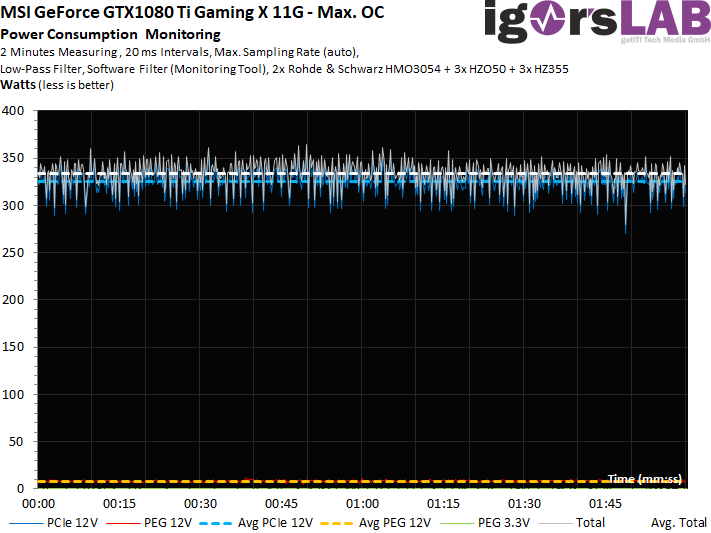
The currents also show no abnormalities in terms of load distribution on the rails.
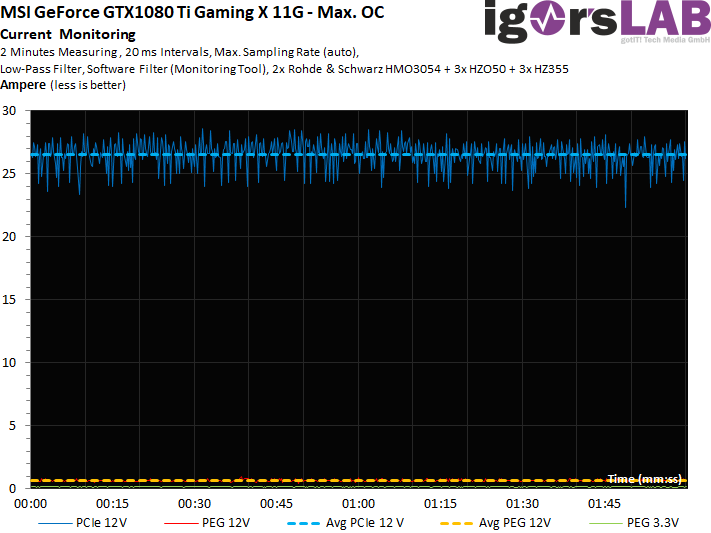
Utilization of the motherboard slot
This point has been repeatedly demanded by readers since the launch of the Radeon RX 480 (also for Nvidia cards), so we will now include this point in every test. With the card tested today, however, the concern is unfounded, because the slot is in fact hardly used. From the point of view of balancing and the very expandable power target, this is certainly a very good decision, especially since it also simplifies the board layout a little.
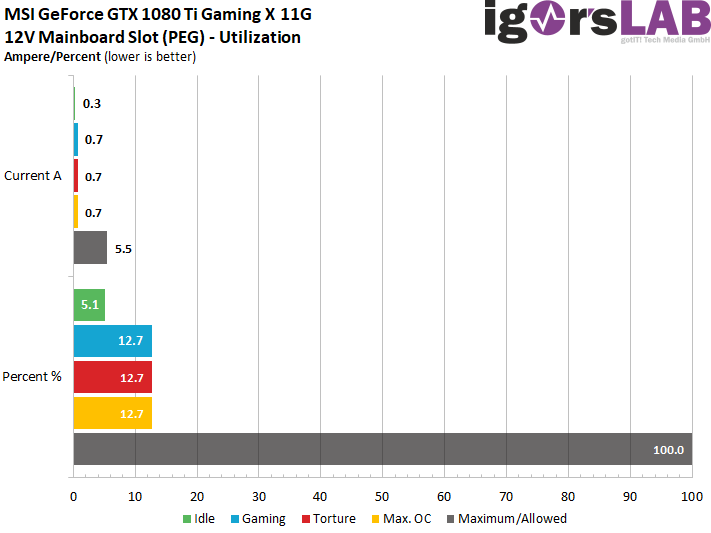
































Kommentieren